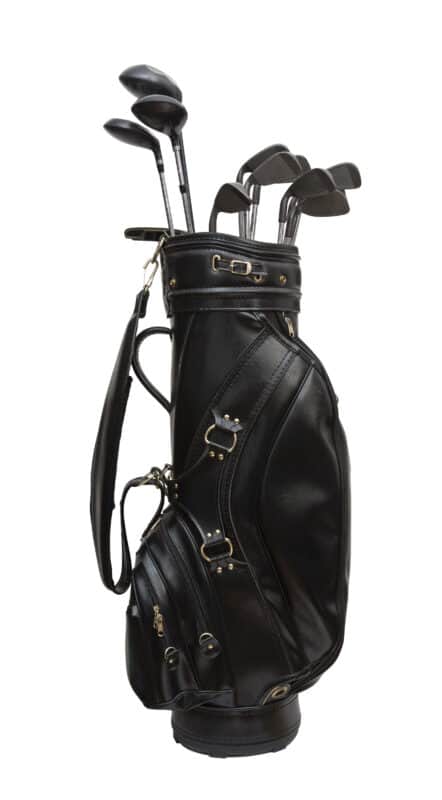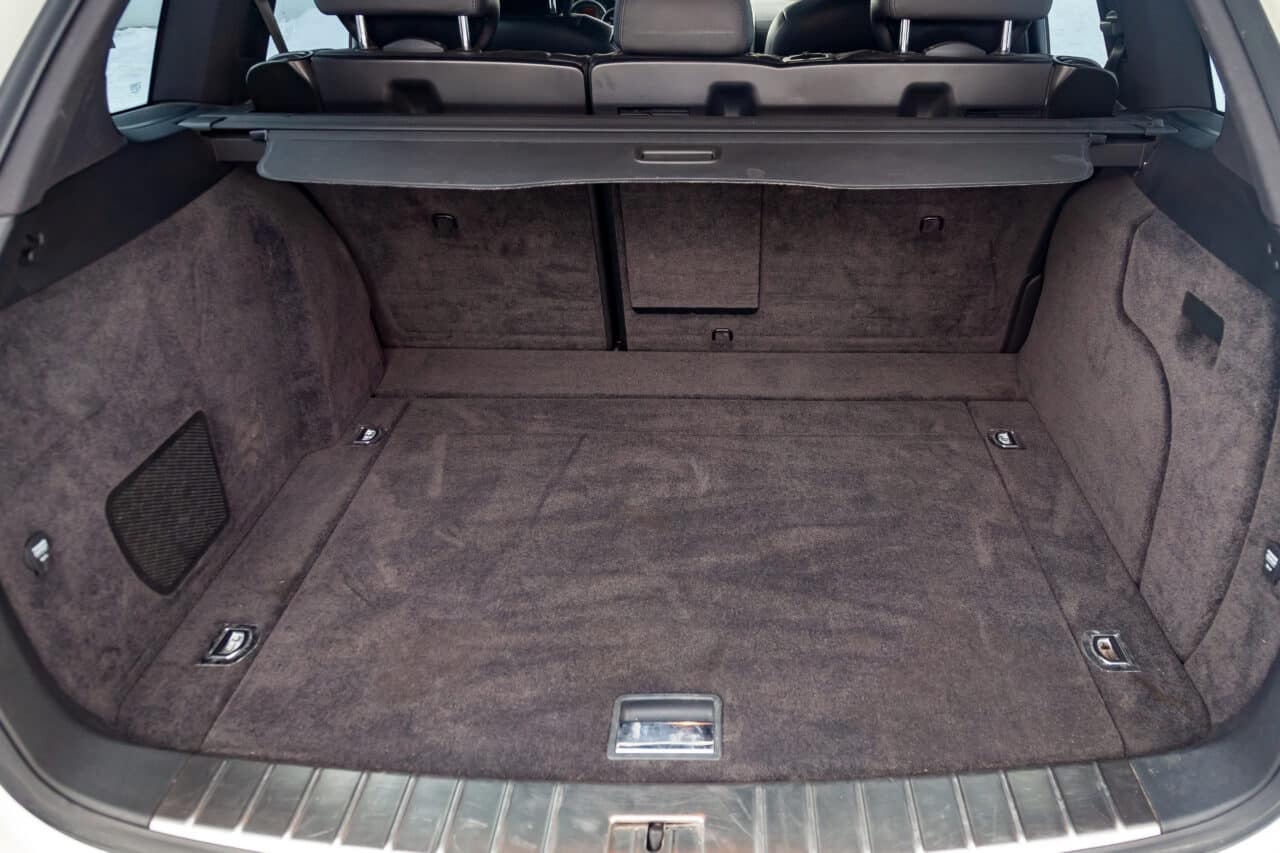What SUV Can Fit Golf Clubs?
If you’re an avid golfer, it is essential that you can drive around your gear. One of the best options is to have an SUV (sport utility vehicle) because they are designed for passengers and sporting activities.
Since an average golfing bag is about three cubic feet, any SUV can fit golf clubs in it. However, some SUVs may need the back seats to be laid down to comfortably fit the golf clubs. That being said, not every SUV can fit multiple sets of golf clubs.
Since most golf club bags are around 3 cubic feet, the question is not if one player’s golf clubs will fit in an SUV, it’s whether you can fit other passengers, cargo, and/or other golf clubs in the SUV as well.
What SUV Has the Right Cargo Volume for Your Clubs?
After searching through avid golfer’s favorite SUVs for carrying their gear, we compiled a list of 25 popular SUV/SUV Crossovers for golfers. The list is in order of the vehicles with the highest cargo volume (with the seats down) to those with the lowest volume.
*The measurements were taken from the newest edition of each model.

Chevrolet Traverse
- Cargo volume with the rear seats folded is 98 cubic feet
- Cargo volume from behind the last row of seats is 23 cubic feet
- Cargo volume with the rear seats folded is 84 cubic feet
- Cargo volume from behind the last row of seats is 16 cubic feet
Honda CR-V
- Cargo volume with the rear seats folded is 76 cubic feet
- Cargo volume from behind the last row of seats is 39 cubic feet
- Cargo volume with the rear seats folded is 71–76 cubic feet
- Cargo volume from behind the last row of seats is 33–35 cubic feet
*The difference is dependent upon whether the model is equipped with a sunroof. With the sunroof, the cargo volume is 71 cubic feet and 33 cubic feet.
Subaru Outback
- Cargo volume with the rear seats folded is 75 cubic feet
- Cargo volume from behind the last row of seats is 32 cubic feet
- Cargo volume with the rear seats folded is 75 cubic feet
- Cargo volume from behind the last row of seats is 12 cubic feet
- Cargo volume with the rear seats folded is 70 cubic feet
- Cargo volume from behind the last row of seats is 39 cubic feet
- Cargo volume with the rear seats folded is 70 cubic feet
- Cargo volume from behind the last row of seats is 38 cubic feet
Range Rover Velar
- Cargo volume with the rear seats folded is 70 cubic feet
- Cargo volume from behind the last row of seats is 19 cubic feet
Jaguar F-Pace
- Cargo volume with the rear seats folded is 69 cubic feet
- Cargo volume from behind the last row of seats is 31 cubic feet
Jeep Grand Cherokee
- Cargo volume with the rear seats folded is 68 cubic feet
- Cargo volume from behind the last row of seats is 36 cubic feet
- Cargo volume with the rear seats folded is 66 cubic feet
- Cargo volume from behind the last row of seats is 12 cubic feet
- Cargo volume with the rear seats folded is 65 cubic feet
- Cargo volume from behind the last row of seats is 34 cubic feet
Chevrolet Equinox
- Cargo volume with the rear seats folded is 64 cubic feet
- Cargo volume from behind the last row of seats is 30 cubic feet
- Cargo volume with the rear seats folded is 63 cubic feet
- Cargo volume from behind the last row of seats is 30 cubic feet
- Cargo volume with the rear seats folded is 63 cubic feet
- Cargo volume from behind the last row of seats is 17 cubic feet
- Cargo volume with the rear seats folded is 63 cubic feet
- Cargo volume from behind the last row of seats is 10 cubic feet
- Cargo volume with the rear seats folded is 62 cubic feet
- Cargo volume from behind the last row of seats is 31 cubic feet
BMW X3
- Cargo volume with the rear seats folded is 62 cubic feet
- Cargo volume from behind the last row of seats is 28 cubic feet
- Cargo volume with the rear seats folded is 60 cubic feet
- Cargo volume from behind the last row of seats is 31 cubic feet
- Cargo volume with the rear seats folded is 60 cubic feet
- Cargo volume from behind the last row of seats is 31 cubic feet
- Cargo volume with the rear seats folded is 60 cubic feet
- Cargo volume from behind the last row of seats is 27 cubic feet
Mercedes GLC
- Cargo volume with the rear seats folded is 56 cubic feet
- Cargo volume from behind the last row of seats is 18-24 cubic feet
Audi Q5
- Cargo volume with the rear seats folded is 54 cubic feet
- Cargo volume from behind the last row of seats is 28 cubic feet
Mitsubishi Eclipse Cross
- Cargo volume with the rear seats folded is 49 cubic feet
- Cargo volume from behind the last row of seats is 23 cubic feet
What Is an SUV?
As stated before, SUVs (sport utility vehicles) are cars designed to perform well outdoors, meaning they can typically scale various types of terrain. Unfortunately, there is no clear-cut definition for what makes a vehicle an SUV. Traditionally, SUVs are larger vehicles that have four-wheel drive and can drive off-road. The biggest determining factor in whether a vehicle is an SUV is how it was made.
“Sport-Utility Vehicles, better known as SUVs, use a body-on-frame design. That means the frame and body are built separately and joined together during the manufacturing process. These truck-based vehicles are generally more rugged and can be used to haul larger payloads.”
Source

What Is A Crossover?
Nowadays, more SUV Crossovers are being made than pure SUVs. These crossovers may or may not have four-wheel drive or be able to go off-road. Again, the real factor in distinguishing a crossover from an SUV is the platform it was built on.
A Crossover is usually lighter and more fuel efficient than traditional SUVs, which has made it a popular choice for many customers. Source
